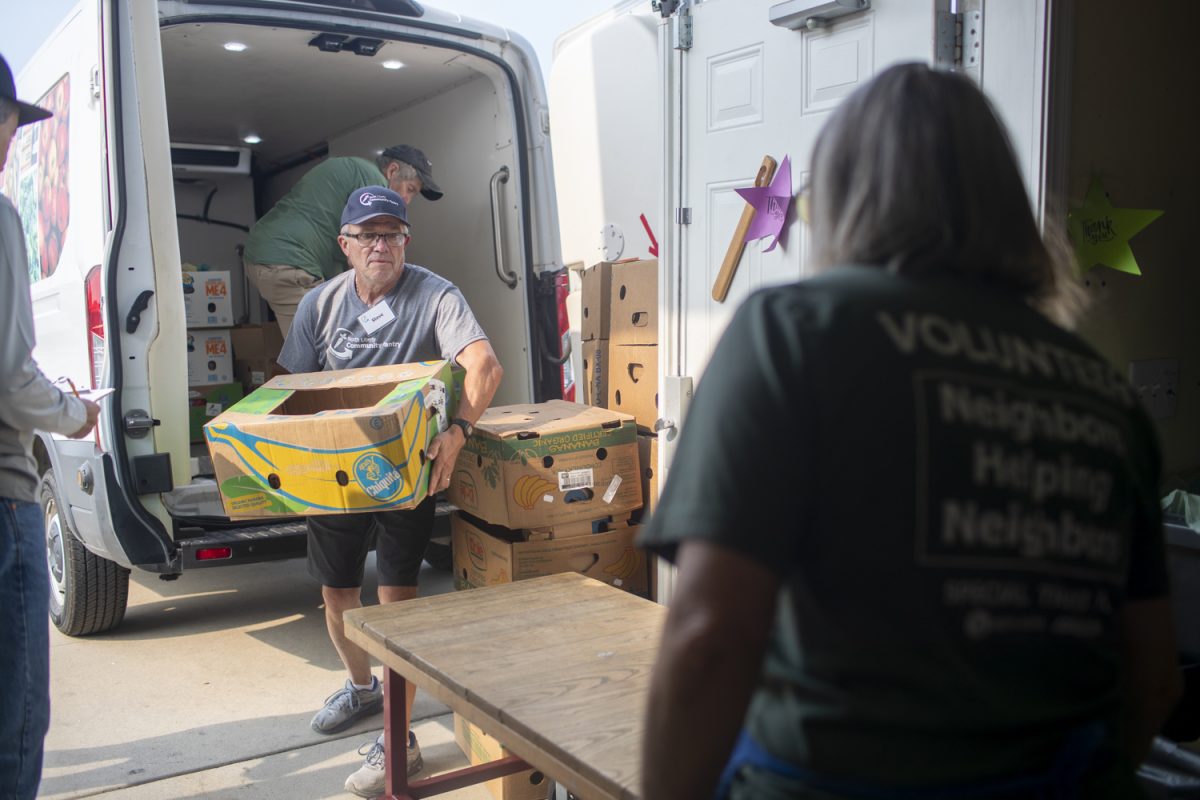Heavy rains this past week left many Iowa City residents nervously watching the rising waters of the Iowa River.
All of this river watching is for naught, said University of Iowa Professor Witold Krajewski, the director of the Iowa Flood Center.
“The university and Iowa City are in a unique location downriver from the Coralville Reservoir,” he said. “This location allows the level of the river in the area to be controlled by the Corps Engineers.”
The Army Corps of Engineers at the Coralville Dam are responsible for controlling the water levels of the river.
Dee Goldman, operations project manager for the Coralville Dam, said the Reservoir is expected to crest at around 697.5 feet above sea level on Wednesday. On Monday evening, the level was 697.32. At the peak of the June 2008 flood, the level was 717.02, 5 feet above the spillway.
Though the 697 figure is more than 10 feet above the normal summer elevation of 683 feet, the water would still need to be at 705 feet to pose a serious flooding risk, Goldman said.
“Right now, we have some beaches flooded, along with around 20 campsites that are either flooded or about to be flooded,” he said. “This isn’t unusual, however; we have some flooding similar to this every year.”
Goldman said opening the spillway of the Coralville Dam determines the water level of the Iowa River by changing the amount of water flowing from the Reservoir.
“We would rather [the water] go through in a controlled way than in an uncontrolled way,” he said.
Kenny Podrazik, who works at the National Weather Service in Des Moines, said the Flood Center plays an important role in flood protection in Iowa.
“It’s a really valuable tool for us and for a lot of other agencies throughout the state,” he said. “We partner with them, and they also work closely with the Army Corps of Engineers.”
According to the National Weather Service, Iowa City has received 5.57 inches of rain so far in June, 1.31 inches above normal.
The Iowa Flood Center was started after the devastating flood of 2008 in eastern Iowa, including Iowa City, which occurred because the Coralville Reservoir filled up and the level of the river was no longer controllable, Krajewski said.
The center is able to gather the data it uses through the use of hundreds of student-developed “bridge sensors,” as Krajewski calls them, placed around the state.
“Obviously they do not measure the bridge but the level of the water running under it,” he said. “This is less critical for the university and Iowa City, but for places without upstream protection, measuring this is much more critical.”
The data collected are available in more than 1,000 Iowa communities on the center’s website, Krajewski said.
For now, the center is working on improving the accuracy of its data and working to develop a mobile site, he said. In the future, Krajewski hopes to take the Flood Center’s model to other states.
“There is nothing else like the Iowa Flood Center in the country,” he said. “We really are the first kind of this program.”
Krajewski, Goldman, and Podrazik agree there is little to no risk of flooding in the Iowa City area in the next few weeks, but that could change.
“The hydrology of Iowa is such that it takes two weeks of storm to go from a dry state to a wet state,” Krajewski said.
“All it takes is a few big storms to make people nervous.”






